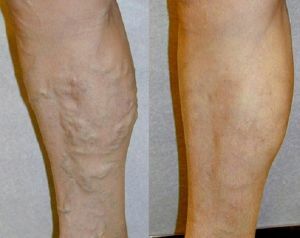 Veins are the blood streams that saturate the body with oxygen and nutrients. It is legs that are equipped with a complex system of deep and superficial veins.
Veins are the blood streams that saturate the body with oxygen and nutrients. It is legs that are equipped with a complex system of deep and superficial veins.
In the case when deep veins can not cope with the load, superficial ones come into operation. In the veins of the legs there are special valves pushing blood from the bottom up.
If for some reason the valves do not cope with their work, stagnation of blood in the veins occurs. And as a result, a blockage of veins. Naturally, this leads to the fact that the nutrition of tissues will be disturbed and oxygen starvation occurs.
Contents
- The causes of venous thrombosis
- The causes of venous thrombosis
- The stages of varicose disease
- Common symptoms of the disease
- Diagnosis of the disease
- Comprehensive approach to therapy
- Traditional medicine
- Prevention of venous diseases
Causes of venous thrombosis
Occlusion of veins usually affects elderly people with obesity, diabetes,various cardiac pathologies and thrombophlebitis. In addition, tobacco smoking, alcohol consumption, drug abuse, and severe labor and limb injuries are provocative factors.
Operational interventions, and infectious diseases, and long-term inflammatory processes can accelerate the process of blood clots. In some cases, cancer can also act as a catalyst for the formation of thrombi.
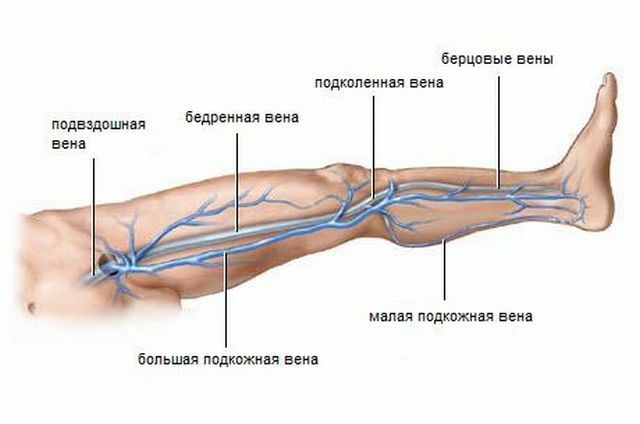
There are a number of factors that trigger the formation of blood clots and contribute to the development of venous clogging:
- Incorrect metabolism and liver disease lead to an increase in blood clotting. Very high hemoglobin leads to the fact that the blood becomes thick, its movement slows down, and thrombi form.
- Permanent venous injection or surgery leads to a violation of the integrity of the veins and because of this there is a violation of the structure of the walls of deep veins.
- Prolonged compression of the veins because of uncomfortable clothing, shoes or a sedentary lifestyle also leads to pathological changes.
- Congenital susceptibility to .
- As a sedentary lifestyle, and a constant load on the legs of can lead to stagnation of blood.
- Constant infringement of a diet , lack of vitamins and microelements in food, a sharp increase in body weight, pregnancy and heavy birth.
There are two types of occlusion of the veins depending on the origin of the disease:
- endogenous develops as a result of falling into the lumen of a vessel of fatty, blood or lymphatic tissue;
- exogenous is manifested by the ingress of bacteria, viruses, foreign bodies or air into the vessel walls.
When the foreign body enters the vessel, the vein is stretched to the condition of the venous cone. On the body( leg or arm), a clear bluish cyanotic hue is clearly visible.
Occlusion of veins can occur on the hands, palms and hands, especially people predisposed to it, engaged in heavy physical labor, suffering from hypertension and diseases of the cardiovascular system.
The stages of varicose disease
In the early stages of the disease, the patient's overall fatigue, shortness of breath, increased blood pressure, unpleasant 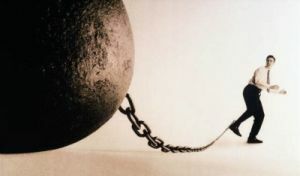 sensations in the legs or arms, and heaviness in the limbs increase. Especially often these symptoms are manifested during physical exertion.
sensations in the legs or arms, and heaviness in the limbs increase. Especially often these symptoms are manifested during physical exertion.
The next stage is accompanied by puffiness of the limb, painful sensations, which are amplified by palpation. At the sites of formation of thrombi, one can observe a venous network or a node in the form of a bluish cone.
Deep occlusion leads to the formation of trophic ulcers at the site of the venous junction. The affected area is very itchy, covered with small pimples like an allergic rash.
In addition, the disease begins to affect the nearby joints( thigh, ankle, knee) and obstruct their movement. In case of exacerbation of the disease, the joint may refuse for a while, creating a traumatic situation for ligaments and muscles.
If at this stage you do not contact a specialist for qualified help, the disease, progressing, can lead to the death of vein cells, blood infection and death.
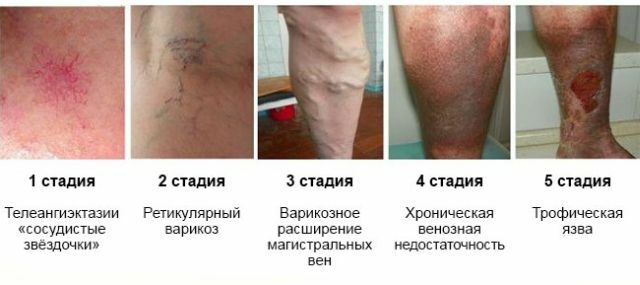
General symptoms of the disease
The blockage of the veins on the legs usually develops against the background of existing diseases, and therefore it is possible to skip the first symptoms of the already manifested disorder.
At the beginning of the course of the disease, only a small leg pain or discomfort below the knee and to the feet is concerned.
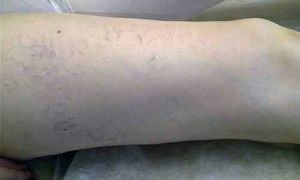 After a while, the symptoms become more pronounced and become more vivid. The patient develops severe swelling, skin changes color, legs become wadded and cast-iron, at night cramps disturb.
After a while, the symptoms become more pronounced and become more vivid. The patient develops severe swelling, skin changes color, legs become wadded and cast-iron, at night cramps disturb.
This zone, where a sharp narrowing of the vessel walls occurs directly, becomes very hot. Movement causes pain, which is given to the thigh or to the shin.
Usually, edema occurs in the place of formation of the thrombus itself. Therefore, you should pay attention to the thigh, shin, calf or foot. The skin turns blue and glossy.
With further exacerbation of the disease, the patient greatly raises the temperature, he feels very severe pain, and through the skin of the legs can be considered sick inflamed vessels.
Diagnosis of the disease
Anyone with a predisposition to blockage of the veins should carefully monitor the condition of their limbs. And at the first suspicions on occurrence of disease to address to the expert.
For the correct diagnosis, the phlebologist will conduct an external examination of the legs, make an anamnesis based on the patient's complaints and suggest a duplex ultrasound scan. 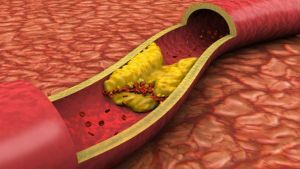
Such a survey will help determine the true disease and prescribe the right treatment. The scan will give an accurate picture of the location of the thrombus and the depth of the vein lesion, and also help to study the causes of tumors.
In the event that part of the thrombus has come off and began to move through the vein, the patient should be immediately examined using new methods of phlebography, which allow identifying mobile neoplasms.
Complex approach to therapy of
Such a serious disease as blockage of the veins requires extensive medical treatment, and with the recommendations of a doctor of surgical intervention.
The choice of treatment method will depend on the severity of the disease and the location of thrombi, as well as the degree of risk.
A special feature of this disease can be considered the constant formation of new foci, if one venous cone appeared, very soon another and third will appear next. If the treatment is postponed, the cones form a nodal mesh, leading to complete vein obstruction.
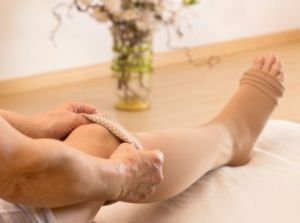 In light cases, anti-inflammatory and tonic ointments are used, pharmaceuticals that enhance blood flow, drugs and products that dilute blood and saturate it with the necessary vitamins.
In light cases, anti-inflammatory and tonic ointments are used, pharmaceuticals that enhance blood flow, drugs and products that dilute blood and saturate it with the necessary vitamins.
There are a number of hardware methods of treatment of venous insufficiency, which are currently the most progressive and sparing at all stages of the disease.
At moderate severity of the disease, intravenous or subcutaneous injections of anticoagulants are prescribed, as well as the systematic use of thrombolytics that can dissolve the formed blood clots.
If the thrombus starts moving in the hollow lower vein, a filter is placed to stop it. For this, a small longitudinal incision is made under local anesthesia. In more severe cases, surgical intervention is performed to remove blood clots and a part of the vein.

Installing a filter for blood clots
Inpatient treatment will take at least three weeks, while the patient will be prescribed bed rest and a special diet that excludes animal fats, spicy, smoked and salted.
Traditional medicine
A non-traditional method of treatment of venous obstruction is widely known: hirudotherapy( treatment with medicinal leeches).
Several leeches are placed on the sacrum and on the limbs above the venous nodes. After this procedure, the blood becomes liquefied and passes faster through the veins.
There are many other folk remedies for the treatment of knots when veins are occluded:
- Compresses made of kefir and Artemisia are very effective. To do this, mix 100 g of yogurt( curdled milk) with chopped wormwood and mix into gruel. Apply to a sore spot for 5-6 hours, cover with cellophane. The procedure should be carried out for a week, then repeat after a three-day break.
- The medical properties of burdock are well known. With this disease, you need to use a well-heated burdock leaf. Apply to the sore spot with the wrong side and wrap the limb on top. Treatment continues until the disappearance of
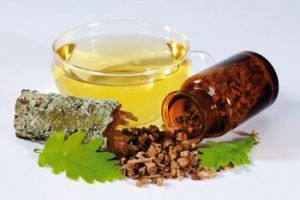 pain, as the cones decrease after 2-3 procedures, do not stop and hold at least 10 sessions.
pain, as the cones decrease after 2-3 procedures, do not stop and hold at least 10 sessions. - For dilution of blood and strengthening of blood vessels, it is possible to prepare a decoction from the bark of oak and birch juice .Finely grind 10 g of oak bark and 20 g of blackberry roots, mix with 20 g of birch juice and 20 g of tincture of horsetail. Composition warm up, not leading up to a boil. Use 4 times a day for 100 g for 2 weeks.
Prophylaxis of vein diseases
If a person has a predisposition to vein diseases, a number of simple rules should be followed that will not help to bring the matter to a serious diagnosis:
- , since both a sedentary lifestyle and constant standing work lead to stagnation of blood in the veins, needsduring the day to do five-minute breaks every hour to stretch your legs;
- should always conduct blood tests for , drink more water and take aspirin at night for the dilution of blood;
- can not expose its limbs to heavy overloads of the , but you can do some kind of sport;
- should follow the diet of and monitor its weight;
- DO NOT wear uncomfortable shoes, give up high heels and crushing clothes;
- sleep better by lifting your legs ;
- do not get carried away with sauna and sauna , and for limbs do a contrast shower to strengthen the walls of blood vessels.
In case of swelling and pain, seek medical advice immediately.
